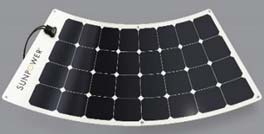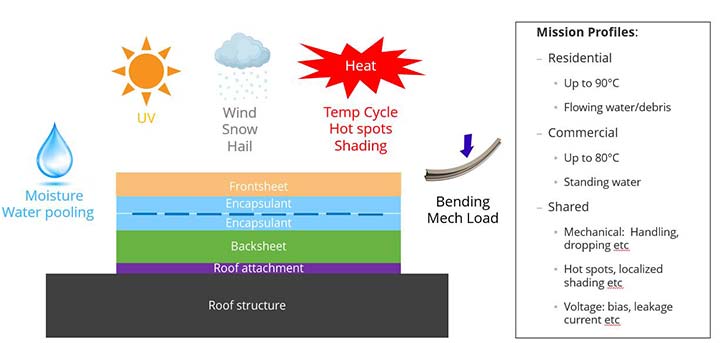Advanced Material Development to Support Low-LCOE 25-Year Flexible Photovoltaic Modules
DuraMAT engineers, evaluates, and develops material stacks to enable low-cost, 25-year lifetime, lightweight photovoltaic (PV) modules that enable direct-to-roof attach for residential or commercial systems.
Critical to this work is the development of physics of failure models to understand acceleration factors and predict the material and product lifetime.
Residential and commercial systems are challenged by relatively small job sizes and complicated balance of systems (BOS), which result in high overhead and labor costs. One approach that has been proposed is to utilize frameless, racking-less PV systems, i.e. lightweight modules, which attach directly to residential and/or commercial roofs and utilize the roof as the mechanical structure. These systems—if made considering long life, reliable, low cost, and high efficiency—could drastically reduce the levelized cost of energy (LCOE) of distributed PV by simplifying logistics, eliminating BOS components, and greatly accelerating installation.
To enable reliable, high-efficiency flexible modules, sufficient mechanical integrity of the laminate is necessary to protect crystalline silicon cells from mechanical stresses such as handling, installation/O&M, and hail impact.
Core Objective
Location
SunPower Corporation and National Renewable Energy Laboratory
Availability
Reports are publicly available.
References
H. Ng, D. Okawa et al., “Advanced material development to support low-LCOE 25-year flexible photovoltaic modules,” in DuraMAT’s Fall 2020 Workshop.
Contact
To learn more about this project, contact David Okawa.

Figure 1. SunPower flexible panel.

Figure 2. Schematic of flexible panel mission profile